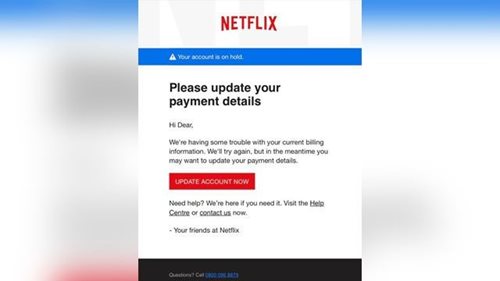We're here to help you at every turn.
Stay alert and know how to spot potential scams and fraud.
Holiday Schedule
VCCU offices will be closed on Monday, January 19th, in observance of Martin Luther King Jr. Day. See our full holiday schedule here.

Stay alert and know how to spot potential scams and fraud.
We want to make our members aware of options available to help reduce unwanted solicitations from mortgage lenders, credit card companies, and other credit grantors. The most effective way to limit these solicitations is to opt out through the following resources:
These resources are provided for your convenience and awareness only. Please note that opting out is your choice, and the credit union does not control these services.
The information provided here is for informational purposes only. These scams have not happened at any Ventura County Credit Union ATM machine and are not a warning to our members. These are merely trends that have happened elsewhere in the United States for which you should be aware. Please contact us with any questions you may have.
A team of organized criminals is installing equipment on legitimate bank ATMs in at least two regions to steal both the ATM card number and the PIN. The team sits nearby in a car receiving the information transmitted wirelessly from equipment they install on the front of the ATM. If you see an attachment like this, do not use the ATM and report it immediately to the police.
The equipment used to capture your ATM card number and PIN is cleverly disguised to look like normal ATM equipment. A "skimmer" is mounted to the front of the normal ATM card slot that reads the ATM card number and transmits it to the criminals. At the same time, a wireless camera is disguised to look like a leaflet holder and is mounted in a position to view ATM PIN entries. The thieves copy the cards and use the PIN numbers to withdraw thousands of dollars from many accounts in a very short time directly from the ATM.
Thieves are putting a thin, clear, rigid plastic “sleeve” into the ATM card slot. When you insert your card, the machine can't read the strip, so it keeps asking you to re-enter your PIN number. Meanwhile, someone behind you watches as you key in your number. Eventually you give up, thinking the machine has swallowed your card and you walk away. The thieves then remove the plastic sleeve complete with card, and empty your account. If your card is captured by an ATM machine, contact the financial institution where the card was issued as soon as possible.
Members have reported receiving phone calls from what looks to be VCCU's main phone number asking to verify their Online/Mobile banking login information, one-time verification passcode or password. This is a Caller ID Spoofing Scam.
Spoofing calls appear to be from local or known sources, but they are actually thieves attempting to gain access to your accounts.College students are recruited through social media, including Facebook and YouTube and in-person at college campuses. Willing participants provide the fraudsters with their ATM/debit cards and PINs. The fraudsters deposit fraudulent checks (stolen or counterfeit checks) to the student accounts via ATMs and subsequently withdraw the funds. The fraudulent checks are subsequently returned unpaid and charged back to the students’ accounts. Following the fraudsters’ instructions, the participants report their ATM/debit card as lost or stolen and that the transactions were fraudulent.
Be aware that you may not be entitled to protection for unauthorized use of your ATM/debit card if you willingly provide your card to the fraudsters.
Members answer an online advertisement offering money to have their cars “wrapped” with advertising from a reputable company. The offer usually includes a lucrative up-front payment and then monthly installments for just driving around in your car and displaying their ads. The scammer sends a check for more than was agreed upon and asks the victim to deposit or cash the item and send electronically the difference directly to the graphic artist that will be performing the installation on the car using Western Union or MoneyGram. The check winds up returning and no one shows up to wrap the car.
With the economy and job markets still struggling, unemployed members searching for work have been victimized by “work from home” scams. The members have been contacted, interviewed and hired via email. After performing a minor task like a “mystery shop” or a making a travel arrangement, they receive a check in the mail that represents an “excess payment.” The boss asks them to cash the check at their financial institution, and return the overpayment via Western Union or MoneyGram. The original check ultimately returns unpaid as a counterfeit and the member incurs a loss.
Scammers pose as grandchildren in distress and needing money wired to them immediately due to a car accident, an emergency medical situation, or to be released from jail in a foreign country.
Members selling an item on an online site such as Craigslist are sent a check for more than the amount requested. The buyer contacts the member and states to deposit or cash the item and send the difference back electronically. Additionally they may state the difference is for a moving company to pick up and transport the item. The member is instructed to send the difference via Western Union or MoneyGram to the moving company. The original check ends up returning and the member is left with a bad check and the merchandise they tried to sell.
Peer-to-Peer (P2P) payment apps like Zelle, Venmo and CashApp are useful tools to pay people you know quickly and easily online. Unfortunately, fraudsters have caught on and use these apps to trick people into sending them money without sending the goods. Or even hack into your account to send money! To avoid being caught in a P2P scam, remember these tips:

Elderly members are being targeted via the internet on dating sites. The alleged suitor spends time getting to know the victim and gaining their trust and personal information. Soon the scammer asks for money claiming a tragedy has befallen them and they need it desperately. Often they create fake online profiles and prey on the sympathy and loneliness of their victims.
VCCU is a full-service, Southern California credit union with branches in Ventura, Port Hueneme, Oxnard, RiverPark, Camarillo, Thousand Oaks, Simi Valley and Moorpark. If you live, work or attend school in Ventura or Santa Barbara Counties, you are eligible to join!